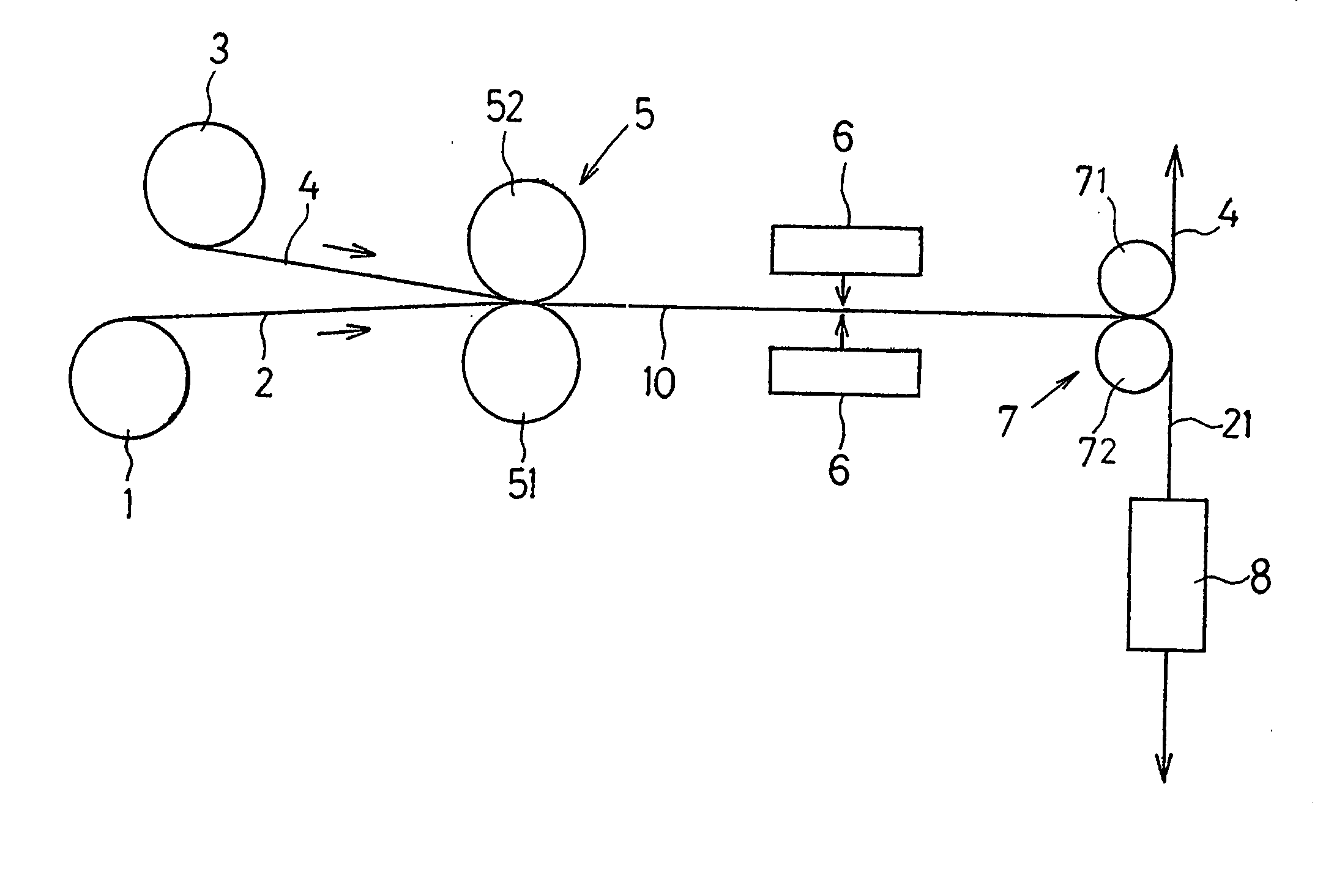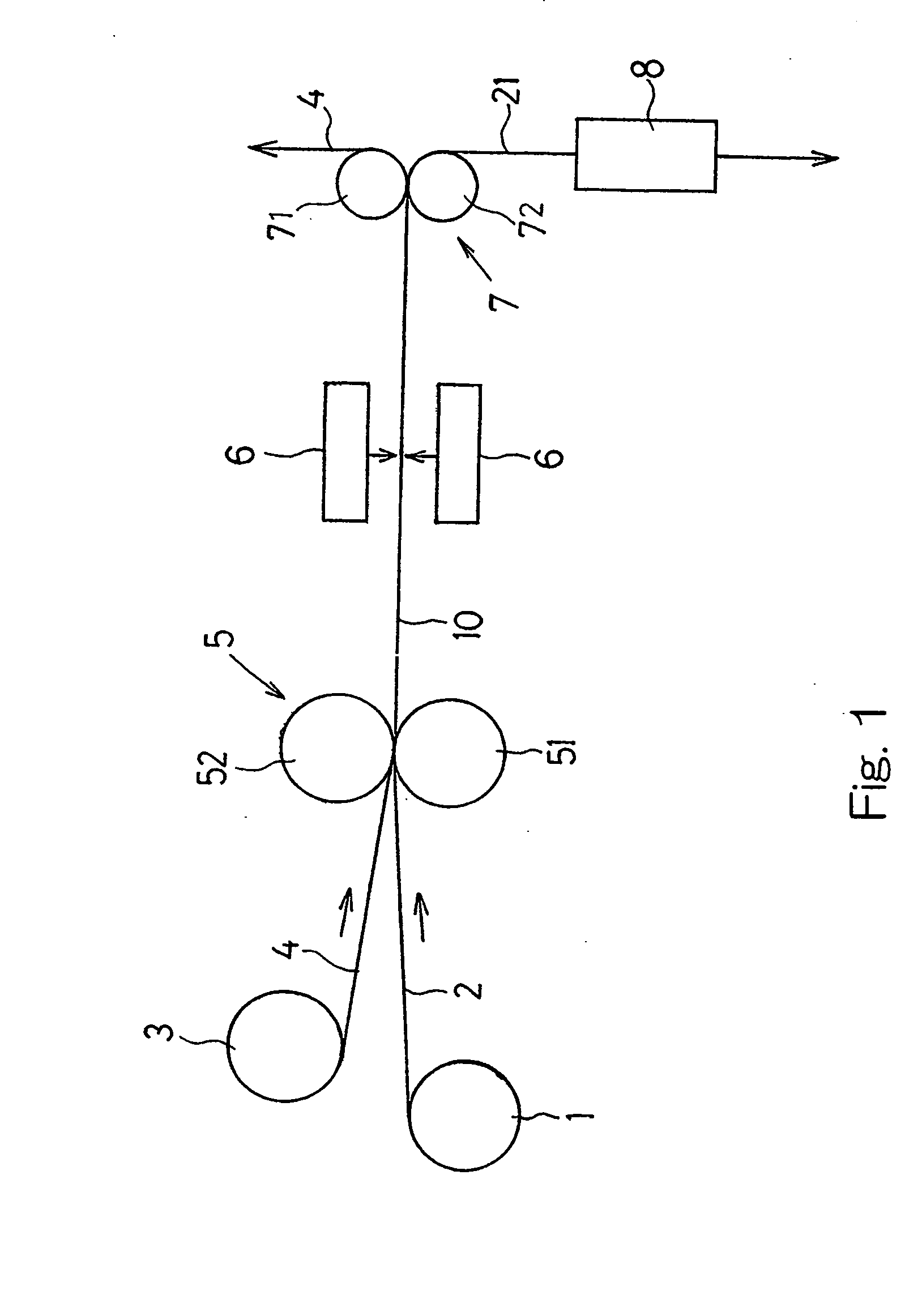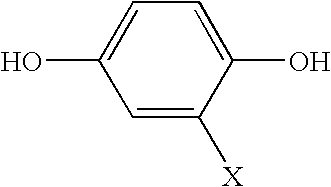Method of making liquid crystal polymer films
a liquid crystal polymer and film technology, applied in the field of liquid crystal polymer film making, can solve the problems of increasing reducing the thermal expansion coefficient of the film
- Summary
- Abstract
- Description
- Claims
- Application Information
AI Technical Summary
Benefits of technology
Problems solved by technology
Method used
Image
Examples
example 1
The thermotropic liquid crystal polymer film, obtained under Reference Example above, and a support member, which is an aluminum foil of 50 μm in thickness and having a thermal expansion coefficient S of 23×10−6 cm / cm / ° C., were supplied towards a continuous hot roll press apparatus including a heat resistant rubber roll, (having a hardness of 90 degree according to the JIS A) and a metal roll. As the thermotropic liquid crystal polymer film and the support member were passed through the nipping area of the continuous hot roll press with the thermotropic liquid crystal polymer film and the support member held in contact the heat resistant rubber roll and the metal roll, respectively, they were press-bonded together at 26°° C. under a pressure of 10 Kg / cm2 to thereby provide the laminate of the thermotropic liquid crystal polymer film and the copper foil at a rate of 3 m / min. At this time, a tensile force of 3 Kg / 40 cm width had been applied to the thermotropic liquid crystal polyme...
example 2
The thermotropic liquid crystal polymer film, obtained under Reference Example above, and a support member, which is a titanium foil of 30 μm in thickness and having a thermal expansion coefficient S of 9×10−6 cm / cm / ° C., were supplied towards a continuous hot roll press apparatus including a heat resistant rubber roll, (having a hardness of 90 degree according to the JIS A) and a metal roll. As the thermotropic liquid crystal polymer film and the support member were passed through the nipping area of the continuous hot roll press with the thermotropic liquid crystal polymer film and the support member held in contact the heat resistant rubber roll and the metal roll, respectively, they were press-bonded together at 260° C. under a pressure of 10 Kg / cm2 to thereby provide the laminate of the thermotropic liquid crystal polymer film and the titanium foil at a rate of 3 m / min. At this time, a tensile force of 3 Kg / 40 cm width had been applied to the thermotropic liquid crystal polyme...
example 3
The thermotropic liquid crystal polymer film, obtained under Reference Example above, and a support member, which is a copper foil of 18 μm in thickness and having a thermal expansion coefficient S of 18×10−6 cm / cm / ° C., were supplied towards a continuous hot roll press apparatus including a heat resistant rubber roll, (having a hardness of 90 degree according to the JIS A) and a metal roll. As the thermotropic liquid crystal polymer film and the support member were passed through the nipping area of the continuous hot roll press with the thermotropic liquid crystal polymer film and the support member held in contact the heat resistant rubber roll and the metal roll, respectively, they were press-bonded together at 260° C. under a pressure of 10 Kg / cm2 to thereby provide the laminate of the thermotropic liquid crystal polymer film and the copper foil at a rate of 3 m / min. At this time, a tensile force of 3 Kg / 40 cm width had been applied to the thermotropic liquid crystal polymer f...
PUM
| Property | Measurement | Unit |
|---|---|---|
| melting point Tm° | aaaaa | aaaaa |
| heat distortion temperature | aaaaa | aaaaa |
| melting point Tm° | aaaaa | aaaaa |
Abstract
Description
Claims
Application Information
 Login to View More
Login to View More - R&D
- Intellectual Property
- Life Sciences
- Materials
- Tech Scout
- Unparalleled Data Quality
- Higher Quality Content
- 60% Fewer Hallucinations
Browse by: Latest US Patents, China's latest patents, Technical Efficacy Thesaurus, Application Domain, Technology Topic, Popular Technical Reports.
© 2025 PatSnap. All rights reserved.Legal|Privacy policy|Modern Slavery Act Transparency Statement|Sitemap|About US| Contact US: help@patsnap.com



